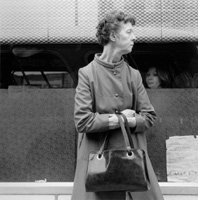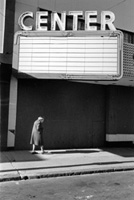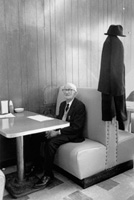A Visual Diary
Gerald Parkers Brockton Project
"I guess it's never
easy to know why one does anything because the reasons that motivate us
in the first place are never the same in the end. I was young and full
of ambition, looking to make my mark in the world. I also knew the medium
of photography was undeniably the way to capture the truth about humanity.
I had a desperate need to try and understand myself, to find a purpose
on this planet. After having read James Joyce's `Portrait
of the Artist as a Young Man' it occurred to me that if I were to
see the world clearly and understand my destiny I must start by looking
where it all began, back to the streets of my youth." The demise of a small town
ripped him apart. Brockton, Massachusetts, once a thriving industrial
town, was where Gerald Parker grew up. Between 1977 and 1980 Parker returned
and relentlessly recorded the pain of run-down neighborhoods, boarded
up stores, movie houses, and cheap bargain entrepreneurs. Walking the
streets he knew so well, he documented the lonely existence of barbers
as they sat in their empty shops reading the daily paper or stepping outside
to feed a crust of bread to the pigeons. |
||||
"If all this change had
taken place in such a short time it stood to reason that it was happening
in other places," he thought. "If I could document the true
essence of Brockton's decline it would be a valuable tool for future
generations. In retrospect, it was my idealistic response to a situation
in need and consequently my work barely raised an eyebrow. The Discipline Of Seeing |
||||
"I approached my photographs
like a fly on the wall and rarely asked anyone if I could photograph them.
I would come up on a person and be focused with the exposure ready so
all I had to do was bring my eye to the camera and shoot." |
||||
Fortunately Parker's work is now out of wraps and is being taken seriously. "Hopefully," he says, "my images, put away these many years, will be like a fine wine and retain a timelessness." The Artist's Statement |





































